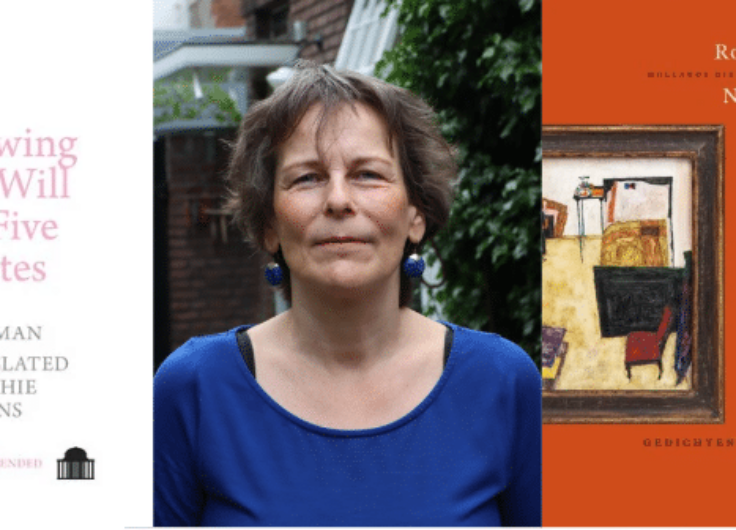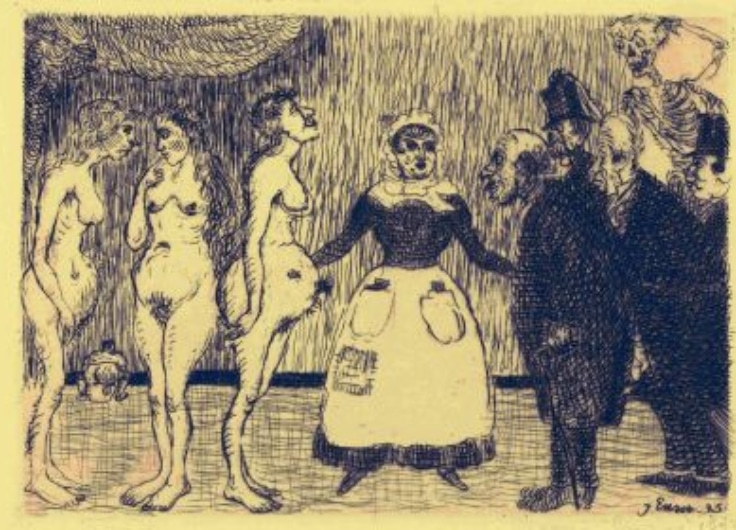Intense, Warrior! Why We (Don’t) Need to Worry About Teen Slang
Teens don’t care about their language anymore. It’s a common complaint, usually met by teenagers with an eye-rolling response: okay, boomer. But is there some truth to this? Associate Professor of Dutch Linguistics Freek Van de Velde looks for answers in recent teen slang and scientific research.
Age is a social divide. Barriers between generations are higher than those between regions. A sixty-year-old in Ghent knows more sixty-year-olds in Antwerp than thirty-year-olds in Ghent. There are exceptions though: teachers or doctors, for example, who, by profession, meet people much younger or older than themselves. But the average person prefers to stay within their own age group.
Despite–or perhaps because of–this age segregation, there is an immense fascination with what other generations are up to. This is reflected in popular newspaper articles emphasizing the differences between Boomers, Gen Xers, and Millennials, as well as in TV series such as Dertigers. And then, of course, there are the teenagers and their own bizarre ways of speaking. They misuse Standard Dutch, readily borrow words from Caribbean, North African, or Anatolian languages, have no understanding of respected French expressions, barely articulate, and butcher spelling, grammar, and punctuation on Snapchat and WhatsApp. Older generations observe the youth’s baboon-like cries and verbal wordplay–it’s all a matter of perspective– with a mix of horror and curiosity.
 Scene from the series 'Dertigers'. Adults are not expected to use the slang of young people. That is considered 'cringe' and 'awkward'.
Scene from the series 'Dertigers'. Adults are not expected to use the slang of young people. That is considered 'cringe' and 'awkward'.© VRT
This fascination with youth culture is evident in the selection of the teen word and children’s word of the year, organized by the children’s and youth channel Ketnet in Belgium, which is reported in the national news each time. Children’s words: boeieeeeuhh ‘boring!’ (2011), kingsize ‘super’ (2012), yolo ‘you only live once’ (2013), omg ‘oh my god’ (2014), beire ‘amazing’ (2015), dab ‘dance move’ (2016), ewa ja ‘well, yes’ (2017), boeie ‘does it matter?’ (2018), ewa drerrie ‘hey dude’ (2020), ma stobbe ‘stop that’ (2021), slay ‘that looks great’ (2022) and bro ‘addressing someone’ (2023). Teen words: yeet ‘yay’ (2019), simp ‘show-off’ (2020), bestie ‘best friends’ (2021), smash ‘impressive’ (2022) and heftig ‘wow’ (2023).
These are colourful, exotic words from the jungle of youth slang, but they are not particularly interesting to linguists. No matter how inventive or vivid they may be, they often turn out to be fleeting trends that are forgotten after a few years. Even if they stick around longer, they quickly become outdated. Each new generation of young people creates its own words and steers clear of the trendy neologisms of the previous generation. The reason for this is that youth language, similar to all group languages and dialects, helps keep unwanted outsiders out. Adults are not expected to use the slang of young people. That’s considered cringe and awkward–uncomfortable and embarrassing. However, there are also notable comeback words: lijp (sick) seems to have made a full return.
Increasingly Dutch
Generalizing is difficult, and the words of the year do not necessarily represent actual language usage. The charts are dominated by words that stand out, and what is commonly accepted tends to be less noticeable. Nevertheless, amidst the anecdotes and trends of the moment, a remarkable trend can be observed: the lists of teen words seem to be getting more Dutch.
In 2023, the top five included: heftig (intense), drm (daarom: that’s why), broer (brother), hayek (godverdomme: goddamn), and rawr (an exclamation to indicate that you find someone attractive).
The leading positions are held by everyday Dutch words that have acquired somewhat unique meanings or have distorted forms (such as drm). Falling outside the top five are the words meid (girl), letterlijk (literally), and strijder (warrior)–all of Dutch origin. This marks a break from the tradition of the past when you needed a magnifying glass to find Dutch words, and the majority of the vocabulary came from the Anglophone sphere. What is going on?
To explain this shift, we need to look at the growing connection between Flanders and the Netherlands, which follows a remarkable U-turn. Until the late 1980s, children and teenagers in Flanders were frequently hearing Dutch from the north of the Netherlands (above the Moerdijk). Ketnet, YouTube, or TikTok didn’t exist yet, and anyone who wanted to watch popular children’s programs had to tune in to Dutch channels. Those born before 1985 likely had many nail-biting moments while following the adventures of Bassie en Adriaan, Te land, ter zee en in de lucht, and other shows produced in the Netherlands or as co-productions between Belgium and the Netherlands. This changed with the arrival of the commercial channel VTM in 1989 and the launch of Ketnet in 1997, leading the Flemish people to cut their daily connection to the Northern Dutch language. In recent years, this has changed further: children and teenagers are now watching much more content on YouTube and TikTok, where they are exposed to Northern Dutch. The words and expressions specific to Dutch vloggers grab their attention and find their way into the speech of the Flemish. For a Flemish person, these exotic terms from the north feel trendy and foreign, comparable to English words. A word such as heftig (intense) is imported from the Randstad.
The increase in the number of Dutch words may reflect a new sense of pride in the Dutch language
But there is more. A second factor explaining the increase in the number of Dutch words is a new sense of pride in the Dutch language. Teenagers in Flanders listen to Pommelien Thijs, Brihang, and Camille, all of whom sing in Dutch. In the Netherlands, Dutch-language hip-hop (Netherpop) has been well established for some time: from Osdorp Posse in the last century to Gerrit-Jan Mulder (nom de plume: Brainpower), The Opposites, and De Jeugd van Tegenwoordig in this century. This might be a response to the alarming dominance that English has gained in recent decades. In cosmopolitan cities, there is a growing movement away from English that recognizes other languages. Once again, the music scene is leading the way, with Belgian global stars such as Stromae and Angèle, who have brought French to the forefront and are challenging the English’s dominance in terms of street credibility.
This pride in language does not completely eliminate English, but asserts a place for Dutch and French in Belgium alongside English. Furthermore, a gain for English doesn’t necessarily mean a loss for Dutch, or vice versa. In collaboration with colleagues, we found that best movie ever! has led to the Dutch equivalent beste film ooit! For younger readers, this might be a surprising realization, but the Dutch structure where ooit (ever) follows a superlative and a noun was uncommon in the language before.
English is more emotional
This does not mean that the younger generation is entirely convinced and has abandoned English altogether. Research by Vanessa De Wilde and her colleagues at Ghent University, in addition to research from Eva Puimège and Elke Peters, has mapped out how much English children know before they are introduced to the language at school. This turns out to be quite a lot, primarily because of games and social media, although there are significant individual differences. Findings from research by Eline Zenner, Laura Rosseel, and Dirk Speelman from KU Leuven show that children in the upper grades of primary school have a more positive attitude toward English words. A bodyguard is more exciting than a lijfwacht; a unicorn is more interesting than an eenhoorn; a van is a spy van while a bestelwagen (delivery van) is something for a florist who makes door-to-door deliveries.
When emotions run high, English words are preferred over Dutch ones
And to go back to the best-movie-ever construction: the English expression with ever specializes in subjective, positive, and exclamatory contexts, which also reflects the dynamic image of English. A similar finding emerged from a recent study by Eline Zenner (KU Leuven), Lisa Hilte (University of Antwerp), Ad Backus (Tilburg University) and Reinhild Vandekerckhove (University of Antwerp): Words such as girlfriend, loser, and sister are not a threat to genuine Dutch words such as vriendin, sukkel, and zus. but they are frequently used in affectionate contexts and between friends. When emotions run high, English words are preferred over Dutch ones.
More than vocabulary
The new vocabulary of young people stands out the most and is particularly unsettling for conservative language users. However, it’s not the only aspect where the younger generation differs from older generations. Grammar, spelling, and pronunciation can also indicate a speaker’s age, although you will need statistics, AI, or a trained ear to pinpoint exact differences.
It’s not always easy to separate fact from fiction. Is Dutch pronunciation declining? Are young people articulating worse? The complaint is timeless, but its timelessness doesn’t automatically invalidate the complaint. Fascinating research from the team led by Harald Baayen (University of Tübingen) sheds light on this. They found that young people are harder to understand because their vowel distinction is less clear compared to older speakers. Further research, primarily focusing on English, indicates that younger speakers have a less diverse vocabulary and express themselves less precisely and efficiently. Furthermore, essays by young people are significantly less clear, less engaging, and more self-centred. The use of first-person pronouns I and me is remarkably high among adolescents (especially in American English), particularly among girls, and steadily declines among older age groups.
 Scene from '#LikeMe', a series about a group of teenagers in Antwerp. The new vocabulary of young people stands out the most, but it is by no means the only aspect in which they distinguish themselves from older generations.
Scene from '#LikeMe', a series about a group of teenagers in Antwerp. The new vocabulary of young people stands out the most, but it is by no means the only aspect in which they distinguish themselves from older generations.© VRT
Are these phenomena unique to today’s youth, or are they typical of young people? To answer this, linguists distinguish between age grading and language change. Simply put, when recording language usage across different age groups in 2024, it’s reasonable to assume that a 30-year-old’s language mirrors that of a 20-year-old in 2014, and a 40-year-old’s language reflects that of a 20-year-old in 2004. This allows us to look back in time without having to dig deep: speakers are living fossils that preserve how language was used in their time. Their language usage is solidified during adolescence. This phenomenon is known as apparent time and has produced reliable and valuable outcomes. For example, research by Annelies de Reus looked at the pronunciation of the ‘ij’ sound in the Delft dialect. Older individuals pronounce it as è, while those slightly younger say ei, and only youngsters pronounce it as ai. From this, we can infer the recent historical shift in pronunciation from è to ei to ai.
Not only vocabulary, but also grammar, spelling, and pronunciation can indicate a speaker’s age
However, there are clear drawbacks: first, this method only allows you to look back about half a century. Second, it assumes that people’s language use is fixed and doesn’t change throughout their lives, which turns out to be partly true. Some language changes are indeed harder to pick up as you age–particularly grammatical ones; as vocabulary generally continues to grow. The apparent time method therefore slightly underestimates historical changes because there is a kind of “redshift” in language use: older speakers have picked up a few changes along the way that didn’t exist when they were younger.
There is a third problem with apparent time research: not all generational differences represent real language changes. Some phenomena occur across all young people, which they later unlearn, regardless of the culture in which they were raised. Such phenomena are referred to as age grading. Mumbling and not distinguishing between vowels may not be a cause of concern in our laid-back society, but rather something that young people have always done, whether they were speaking Latin in Rome under Emperor Augustus, Middle Dutch in thirteenth-century Bruges, or French in the streets of eighteenth-century Paris.
Literacy decline
Are there no factors unique to our time? One major consideration is the massive decline in reading. The numbers don’t lie: reading proficiency is dropping, and when young people do read books, they increasingly prefer English literature, particularly in the young adult genre. This decline in reading is undoubtedly reflected in youth language. Small-scale research conducted with students in 2023 revealed that those who read little are less capable of understanding archaic words from the works of nineteenth-century authors such as Louis Couperus (for example, schalks (mischievous), onbesuisd (carefree), nuffig (snobbish), knevel (moutache) or bekoring (fascination)). Also, young people are significantly less familiar with archaic words than older people. It doesn’t have to be a problem that words are falling out of use in Dutch–who still recalls that the Middle Dutch word dwaan once meant to wash or to clean? However, if words disappear too quickly from the collective memory, a significant part of our cultural archive is lost.
There is also a difference in spelling. Young people today spell less accurately, a trend that has been ongoing for a long time, not only in the Dutch language. Part of these spelling issues can be attributed to an inability, which stems from less text-based and more variation-friendly standards in education. Another part is due to a reluctance to conform to rules. We know this because young people spell much more creatively in chat language and are less concerned with norms in those contexts than in others, such as schoolwork or letters. This is evident from the 2019 dissertation by Lisa Hilte, who is based in Antwerp. In particular, students from vocational education and those from families with a lower socioeconomic status tend to spell more freely.
Should we be concerned about youth language? Is Dutch rapidly being infected with pathogenic influences from other languages, especially English, leading to the grim prospect of a disastrous Babylonian language tower–a fragmented Dutch where generations can no longer understand each other? Or are we overreacting, with the complaints being inevitable reflections of what overly cautious parents have warned about for thousands of years: that the younger generation represents a downfall, and that this is especially evident in their language, yet the gradual shifts in long-term patterns have repeatedly shown these exaggerated fears to be untrue?
I must confess that I watch the decline in reading and the lexical erosion among young people with great concern, but I am, after all, old and weary of life, I am a voice crying in the wilderness, to use a few Biblical expressions that you won’t easily find in youth language. But it might be a comforting thought that cultural pessimism could also reflect a kind of age grading: as the years go by, you get the feeling that everything was better in the past, because you have a blind spot for the weaknesses of earlier generations and the resilience of later ones.













Leave a Reply
You must be logged in to post a comment.